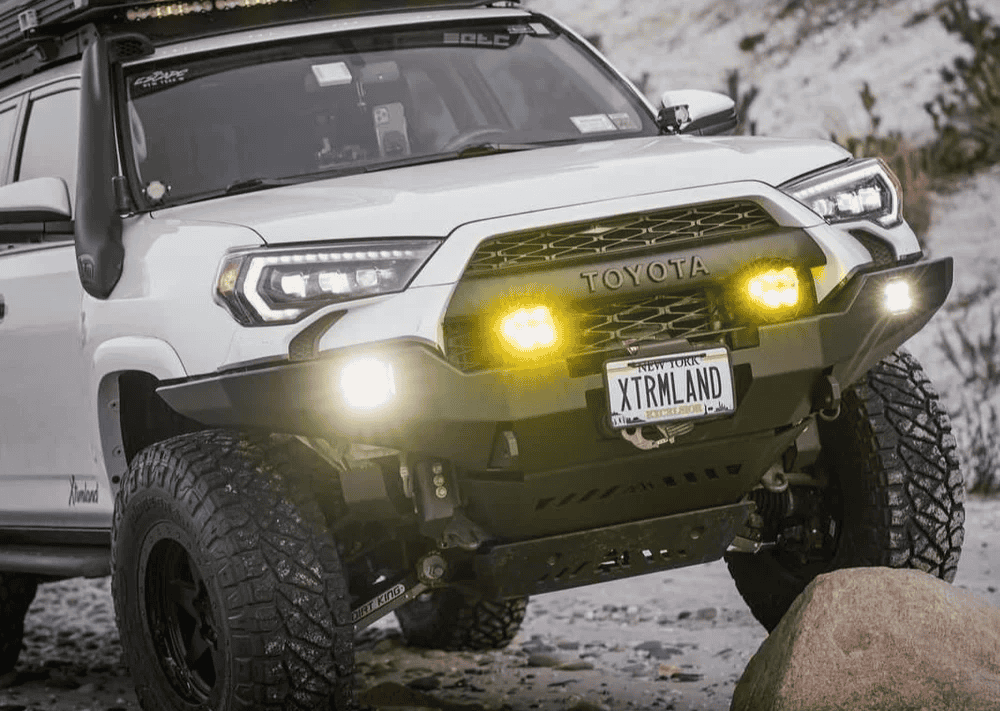Overland Vehicles

A raised intake keeps your engine breathing when the trail turns wet or dusty. During a water crossing, bow waves and splash can flood a low fender intake, sending water into cylinders and causing hydro lock. A snorkel moves the intake to roof height or the upper fender, buying crucial clearance and time if the crossing gets deeper than expected.
Dust is the other enemy. On silt roads, a forward facing snorkel head pulls cleaner air above the wheel line where turbulence is lower and particle load is lighter. Paired with a sealed air box and quality filter, this setup cuts down on abrasive dust that grinds away at rings, bearings, and turbo compressor blades.
Airflow is more than a buzzword. Poorly designed plumbing can add restriction and reduce performance at higher rpm. Good systems balance elevated intake position with smooth bends, adequate diameter, and a sealed path that keeps pressure drop in check. The result is dependable breathing without strange drivability issues.
Water cannot compress. If it enters a cylinder, connecting rods bend, bearings fail, and the engine can seize. Snorkels help prevent this by relocating the intake and removing low point entry paths. Real protection depends on full system sealing, including air box seams, intake ducts, and body penetrations.
Raised intakes can reduce dust ingestion by drawing from cleaner air. Cyclone prefilters add a spinning effect that ejects heavy particles before they reach the main filter. On desert trips, this can extend filter life and maintain steady manifold pressure. Routine checks with a restriction gauge tell you when a filter actually needs service.
Any intake change affects flow characteristics. Long runs with tight bends increase friction and can add measurable restriction at peak demand. Quality snorkels use smooth interior surfaces and generous radius bends to control losses. Expect a slight change in intake tone since resonators sometimes get deleted; a stable idle and clean trims indicate the system is happy.
Materials and sealing determine whether a snorkel is a fashion piece or real equipment. UV stable polymers resist sun fade and cracking, while aluminum or stainless steel options add impact resistance in dense brush. Every joint should be clamped and sealed with appropriate sealant so sudden rain or a bow wave cannot sneak past a gasket.
Snorkel heads come in different styles. A forward facing ram head flows well at speed and sheds rain, while a rear facing or side slotted head reduces water ingestion in heavy storms. In deep snow, a side or rear orientation prevents powder from packing the opening. Swapping heads for the season is common among high mileage travelers.
Sensor integrity matters. Mass airflow sensors and manifold pressure sensors need stable, laminar flow. Keep sensor locations stock when possible, or follow manufacturer guidance for proper placement. After installation, use a scan tool to verify trims, intake air temperature readings, and pressure behavior under load to confirm the system is dialed.
Look for UV rated plastics, sealed rivets, marine grade hose clamps, and automotive sealants that tolerate heat and vibration. Drain paths in the air box should be considered. Some builds block drains completely for water security, while others use one way valves that pass condensation but close during splash events.
After the first shakedown drive, scan for codes, check fuel trims, and listen for whistling that can indicate an air leak. In turbo diesel applications, verify that peak boost arrives as usual and that the air filter minder stays within expected limits across a climb.
Modifications should not vent crankcase gases to atmosphere or alter emissions equipment. Use components designed for your platform and keep documentation of the install. If your vehicle retains a factory warranty, confirm that the intake path remains sealed and the evaporative system is undisturbed.
Start with your environment. Frequent river crossings, coastal storms, and Appalachian creek beds push you toward a fully sealed, raised intake. High desert travel favors a cyclone prefilter and easy access for filter service. Forest routes in humid climates benefit from corrosion resistant hardware and thoughtful routing through tight engine bays.
Think about integration. The intake path must clear light brackets, dual batteries, onboard air, and under hood accessories. Fender templates must be accurate, cuts should be treated for rust resistance, and the final assembly needs to look like it belongs there. A clean install performs better and holds value.
If your build sits on a true overland platform, you can plan snorkel and intake mods as part of the broader system. Pairing the work with breathers, sealing fords, and serviceable filtration creates a package that travels well season after season. For ideas and inspiration, explore Overland rigs by OZK.
When you want professional hands on the job, our Fayetteville team configures and installs raised intakes, sealed air boxes, and matched ducting as part of a cohesive upfit. We focus on airflow, sensor health, and bodywork that looks factory. See how a tailored package comes together on Custom overland upfit.
Trust comes from process. We listen to how you travel, build around your terrain, and deliver with clear walkthroughs at handoff. Learn how we work on Why choose OZK.
We are based in Fayetteville Arkansas, centrally located for easy travel. Fly in, review your rig, and point it toward open country with confidence.
Ready to protect your engine and travel farther with confidence? Our team designs, seals, and installs snorkel and intake systems that match your build goals. Tell us where you drive, and we will spec the right parts and execute a clean, warrantied install from our Fayetteville shop. Tap the form and let OZK map your path.
ADDRESS:
6159 E Huntsville Rd, Fayetteville, AR 72701
PHONE:
(479) 326-9200
EMAIL:
info@ozkvans.com